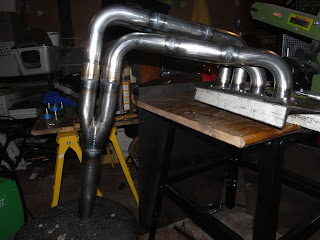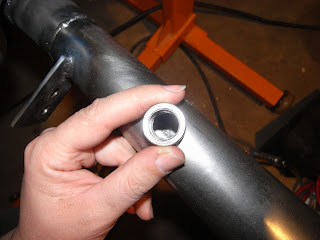I spent this evening using the power of the interwebs to remotely dyno tune the car that has my custom header. This was the first time I had done this. It was exciting and annoying at the same time. I couldn't see everything in exactly real time, but, it was a huge step up from just getting a datalog file sent via email. I could see where the engine was in the timing and fuel maps in semi-real-time. This was a huge help to get my brain wrapped around what needed to be changed. At the end of the evening, we ended up extracting over 10WHP on an already potent package that had been tuned via feedback and datalog. Given my familiarity with this engine, the final timing curve was only off from my guess by at most 2* at WOT.
Here is what I can say about the engine:
It is a DOHC D-series. It has my custom header on it. (See THIS LINK for more info, and also search around for more pics of the thing and design theory.) I tuned it. The engine has more power to gain, especially if it is revved higher. The engine is extremely easy to tune with no stupid peaks, no issues. The AFRs are extremely consistent and it pulls very cleanly through the RPM.
Here is what I can say about the engine:
It is a DOHC D-series. It has my custom header on it. (See THIS LINK for more info, and also search around for more pics of the thing and design theory.) I tuned it. The engine has more power to gain, especially if it is revved higher. The engine is extremely easy to tune with no stupid peaks, no issues. The AFRs are extremely consistent and it pulls very cleanly through the RPM.
Rather than focus on the numbers, look at how darned flat the torque curve is and how close to linear the power curve is:
YES it is a crappy copy. No, I can't an won't post more of the chart.
The scaling of the torque curve is also wrong, due to an issue with the dyno coming out of sync with the RPM. The dyno computer thought the car was revving to 9200RPM when the team was doing pulls from 2500-7500ish RPM.
Also, this was done on a Dyno Dynamics dynamometer. I mention that for the people who know about them. Those that don't and obsess about numbers, you can make fun of the WHP, but I will take this as a huge validation of the general design of my own headers. I will take feedback from this team and improve on what I can do and make things better than before.
I have been smiling with this success the whole evening, eager to share the results with people who have known about this project, and now I share with you!



















































